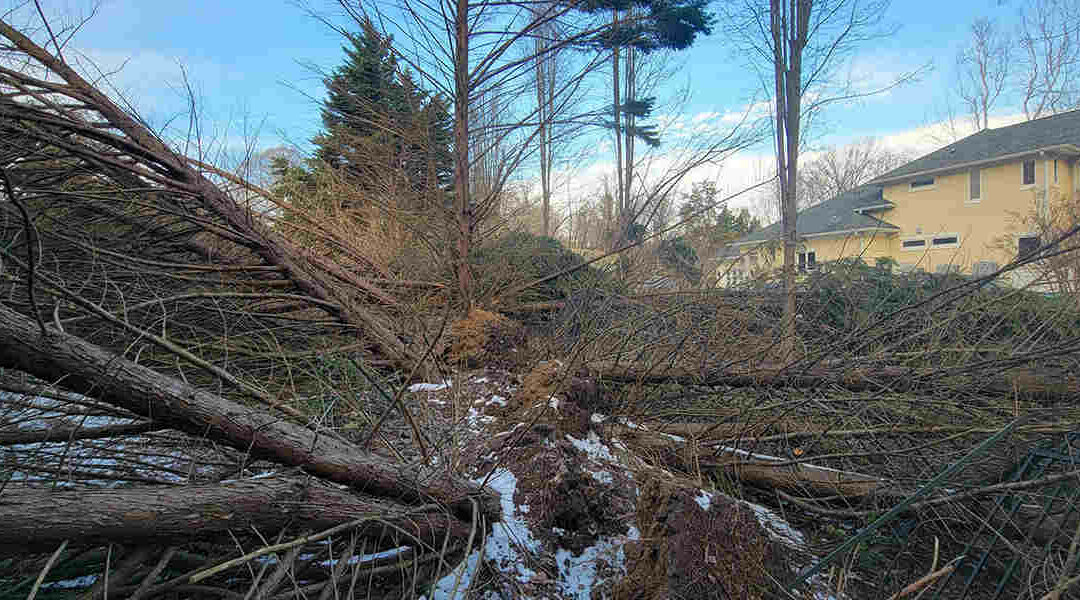Each tree comprises three main parts: the crown, the trunk with all the branches, and the supporting root system. The latter also comes with subcategories, such as the feeder roots in the shallower three to five inches of soil and the structural roots that surpass these depths. The roots withstand everything from erosion to droughts but how much root damage can a tree take?
Tree root resilience is usually high, especially on a healthy tree, but nothing withstands everything. Below, the certified arborists who offer premier tree services in Newburg, MD explain what causes tree root damage and how much roots combat before irreversible damages occur.
What Is the Maximum Tree Root Damage Your Tree Can Bear?
Most trees lose 20% to 25% of their total roots without showing major signs of distress and can regrow what they’ve lost as long as the trees live in the right climate conditions. However, if more extensive root injuries occur, they may need your help regaining their strength before it’s too late to save them.
How Can You Tell You’ve Reached the Limits of Tree Root Damage?
Usually, the shallower feeder roots feel the effects of a compromising environment, meaning most of the root loss occurs here. Since these roots absorb water and nutrients, losing a quarter of them keeps the rest of the tree from receiving the nourishment it needs. Therefore, when your tree root tolerance levels become low, you’ll notice less flower, leaf, and fruit growth, and you must step in to save the tree.
Other signs you need to intervene include:
- Dying or dead twigs and branches
- Discolored or crunchy leaves
- The trunk tilting or leaning
- Premature leaf shedding
- Mustiness or fungal growth
Fixing the Root Cause of the Issue
Now that you know the answer to “How much root damage can a tree take?” what can you do to remedy the situation?
What Causes Root Damage?
The first step is knowing what went wrong in the first place. Symptoms primarily arise after construction projects like trenching and digging to replace old household pipes or snaking drains to remove sewer system roots. Construction workers also harm shallow roots when uprooting house foundations, repaving roads, and replacing sidewalks.
While land work is the most common cause of root injuries, sometimes landscape care does more harm than good. For instance, just as overwatering causes root rot, underwatering weakens the roots. Similarly, little nutrients keep growth to a minimum, while too much fertilizer burns the wood and foliage.
Over-fertilizing also increases soil salinity, barring surrounding roots from absorbing water. It is especially an issue if compact soil keeps it from draining away with watering.
What Can You Do to Create a Better Environment?
Although there’s a high threshold for tree root damage, reverse symptoms with vertical mulching by drilling holes into the soil and filling them with porous vermiculite or perlite. This process increases water filtration in compact soil and gives roots room to grow and absorb nutrients. Moreover, mulching protects surface roots from weed whackers and lawnmowers.
As a preventative measure, determine the dripline barrier around each tree so you don’t dig too close to the root ball during excavation projects.
Keep Your Trees in Top Shape From Root to Tip with Our Assistance!
Tolerable tree root injury means your trees withstand damage to a certain extent. However, that doesn’t mean you should allow it to take abuse. Our licensed and insured Hernandez Complete Tree Service team understands dying tree signs and remedies in Newburg, MD. So, to learn more about how much root damage can a tree take or to request a free estimate on services, call 240-299-4639!


